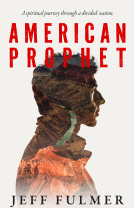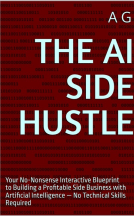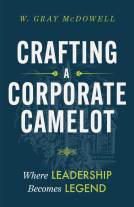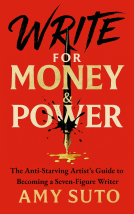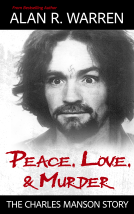
The Art of Peace
by Robert Moriarty
This title was previously available on NetGalley and is now archived.
Send NetGalley books directly to your Kindle or Kindle app
1
To read on a Kindle or Kindle app, please add kindle@netgalley.com as an approved email address to receive files in your Amazon account. Click here for step-by-step instructions.
2
Also find your Kindle email address within your Amazon account, and enter it here.
Pub Date 16 Mar 2016 | Archive Date 29 Apr 2016
Description
An abundance of books chronicle war. Some are written by veterans, a few by arm-chair heroes and summer soldiers and lots by historians. Rarely does a warrior from the battlefield look at combat and ask why - after such a cost - it hasn't led to peace. It's darned impressive, when the writer on the subject was the youngest Marine pilot to serve in Vietnam.
When a person fell short of the mark on something, the Greeks termed it a "sin" - implying a shortcoming, rather than a serious lapse. But when our military leaders make the same kind of mistakes over and over - In Vietnam, twice in Iraq, Afghanistan, Libya, today Syria and assorted "brushfire" wars too numerous to mention - the results call forth the need to use a synonym with a less charitable connotation, as in a transgression, a violation, a wrongdoing...a crime. It's ironic that one of the U.S. military's mainstays is now the drone. Mindless, externally guided, unpredictable and more prone to creating collateral damage as it is to hitting the mark. A nice metaphor for the system that employs it.
The Author dissects the military mindset - which along with the connivance of politicians and inattention by civilians practically guarantees the same cookie-cutter outcomes. It doesn't have to be that way, and given current political and financial vulnerabilities, the system might just collapse of its own dead weight. In the meantime, if we'd like to try and finesse a softer landing instead of a crash, reflecting and acting on the observations of a man who has deeply been and done - in both war and peace - might be a good place to start.
Advance Praise
He expresses the views of an accomplished warrior who came to see the futility of waging a war, any war - in which the ends as well as the means are only dimly considered before or during the conflict itself. He recounts those errors - ironically the kinds of mistakes that are still being made today as the U.S. engages in The Forever War(s) around the globe.
He writes about Vietnam, "We had no strategy other than just to fight the war. Our enemies however, knew exactly what victory meant to them. They wanted to control their own destiny. They wanted to run their own country and had been fighting for independence since 1930..." Sounds like something that happened in this country a long time ago.
A number of people who identify as "Vietnam Veterans" may not have served in-country, or been exposed to hostile fire on a regular basis. The supply tail of a modern army can run 15-20 support personnel for one frontline soldier...or airman. Moriarty's service record, however, demonstrates conclusively that he spent more than his share of time in harm's way.
It's a tribute to his strength of character, a balanced outlook, and perhaps a bit of luck that he didn't come back embittered, resentful and shell-shocked, like so many others, who in many cases still bear internal scars. As a WW II veteran of the Bataan Death March put it, "Time doesn't heal all wounds, it just buries them in shallow graves." All the more reason that his reflections on The Art of Peace should reach the widest possible audience.
Moriarty can be tough as nails and he doesn't hesitate to call down an individual, a group...or a country that doesn't spend enough time walking its talk. But he is also able to open his heart to those who simply want to live life as they please, without having to worry about whether attending a wedding, visiting the market, or making a trip to the hospital is going to end up with them being incinerated in a drone strike. Collateral damage does more than create a host of new enemies in its aftermath, it also demeans those who create those conditions.
What if we as a nation, operated by the expectation that governs the lawful use of deadly force by individuals in many U.S states - to wit, "Only in the case of immediate or unavoidable danger of grave bodily harm or death to yourself or someone in your care" ? The number of concealed carry permit holders nationwide who violate this rule is infinitesimal. Maybe our government should take its cue from this kind of conduct, and seek to behave in like manner. Now wouldn't that be something!
A lot of writers would take half a book to say what Moriarty conveys in the last dozen pages of his. He suggests that "Between the chaos in the Middle East and the slow motion train wreck of the world's financial system, our world is undergoing the greatest change since the Peace of Westphalia signed in 1648 that ended the Thirty Years' War...(which) essentially created the concept of a 'nation state' with sovereignty over its own territory and affairs." And set in motion the idea that you don't attack another state unless they attack you first.
Moriarty has long had his pulse on the derivatives and deficits mess that's likely to bring down the global economic system in the reasonably near future, and he hasn't been shy about chronicling it on his heavily-visited 321gold.com website. The Art of Peace gets us to thinking about the interconnectedness and profound importance of the martial way. Its execution, from grand strategy down to the deployment of the lowliest foot soldier - from the grunt at the front, the pilot in the air, to the drone operator using a joy stick to kill from afar - ultimately ripples across and through every aspect of our lives.
If his suggestions for the reform of our socio-political-military posture are as accurate as his occasional market calls - and I believe that they are - then we and our government leaders, should give his opinions some serious consideration. Because the day is drawing nigh when Mr. Market will be calling the shots. And neither the American Mandarin class, nor the military-industrial complex that receives sustenance from it are likely to have much say in the matter as the systemically worm-ridden complex collapses around our ears.
This writer has not served, as have Moriarty and so many others. But he has trained in the martial arts for most of his adult life. Not competition - rather a study in how to avoid conflict if at all possible, but being willing and able to respond instantly and effectively when there is no other option. Sensei Bradley Steiner inculcates an ethos leading the serious student to transverse an invisible threshold forever separating what could be and was, from can be and is. And when that point has been reached, as he states, the individual will have truly become - a "Warrior in the Decent Sense." Bob Moriarty is one of these men. David H. Smith
Marketing Plan
The book is currently available on Amazon in Kindle format for $14.99 and paperback for $19.99.
Available Editions
| EDITION | Paperback |
| ISBN | 9780997274929 |
| PRICE | US$19.99 (USD) |
Average rating from 6 members
Readers who liked this book also liked:
Jeff Fulmer
General Fiction (Adult), Politics & Current Affairs, Religion & Spirituality
Dr. David Guyer & Ian Keldoulis
Business, Leadership, Finance, Health, Mind & Body, Science
Amy Suto
Business, Leadership, Finance, Professional & Technical, Self-Help
Inga Strümke
Computers & Technology, Nonfiction (Adult), Professional & Technical
Alan R. Warren
Biographies & Memoirs, History, True Crime

